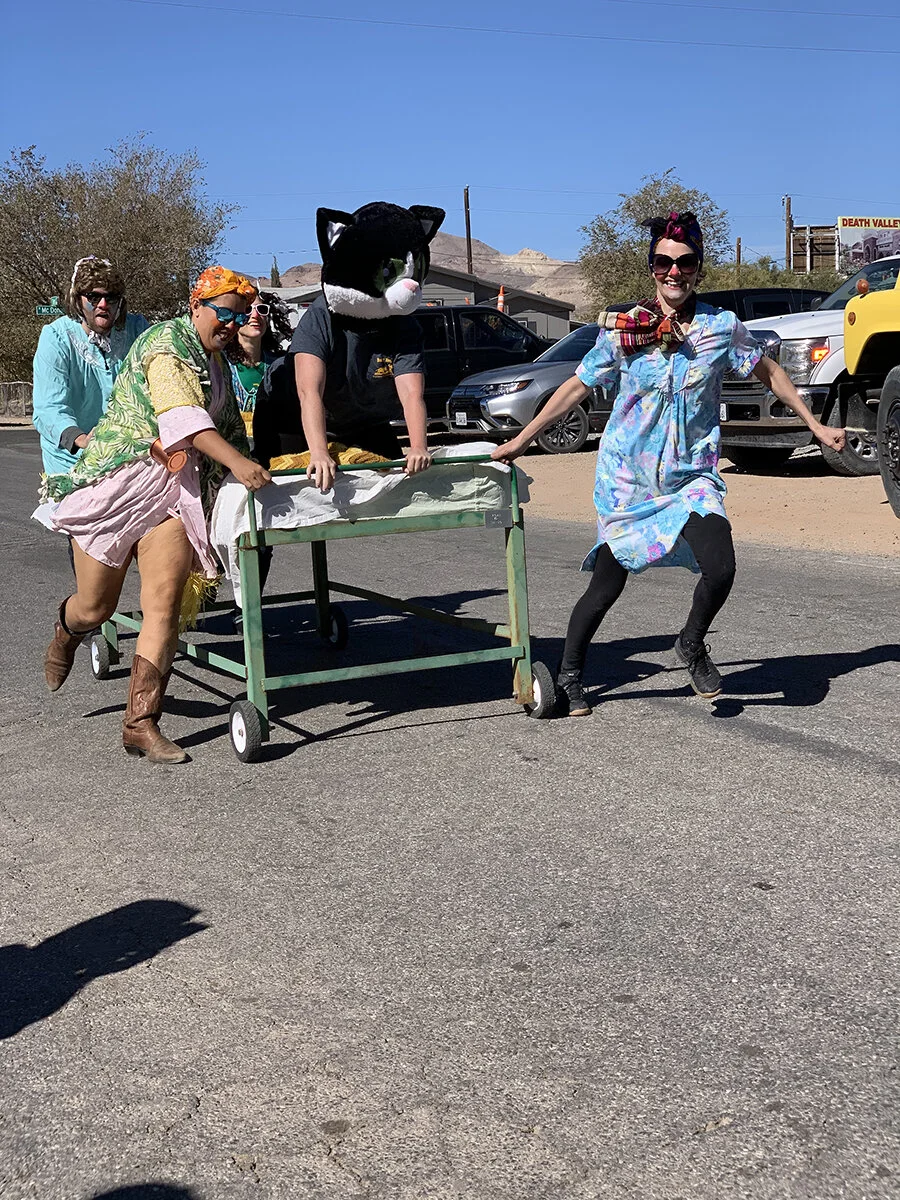Bullfrog Biennial
Karin Q. Miller, Mary Sabo and Mikayla Whitmore, It's Still (Not) Unusual, Desert installation: acrylic, panels, wood glue, mirrors, 2019. Photo Mikayla Whitmore
D.K. Sole reviews the Bullfrog Biennial, the inaugural 3-day interdisciplinary arts festival organized by the Goldwell Open Air Museum, a Southern Nevada non-profit organization whose mission is “To preserve, present, and encourage artistic exploration in and of the Amargosa Desert–an evocative landscape along the eastern edge of Death Valley National Park.” Their work includes the care and presentation of a 15-acre outdoor sculpture park near the ghost town of Rhyolite, Nevada and an artist residency program in the Museum’s nearby Red Barn Art Center. The Biennial was presented October 25 – 27, 2019 and ran concurrent with “Beatty Days” in the small desert town of Beatty, Nevada. Festival events took place at the Red Barn Art Center, the ghost town of Rhyolite, and in the town of Beatty, with satellite spaces at the El Portal Motel, and events at the Chili Cookoff and Beatty Day’s parade.
By D.K. Sole
I think the sky and the land are two shapes inside a circle at the end of a horizontal wooden corridor but that’s false, I know it is, and when I take my face away from the periscope artwork, the scene in front of me will be a vertical wall of dirt. This must be the area of the Silver State Shooting Club firing range where they blast clay pigeons with shotguns because the rocks underfoot are dirty with long plastic shell casings and fluorescent-sprayed bits of ceramic. The artwork, Scuttled, asks you to think about “being a point” the artist Russell Dudley had told us as he walked away after adjusting whatever he had been touching on the periscopic tower. The mirrors inside had projected my vision over the top of the berm, or perhaps at the edge of the berm, it was hard to know. When I took my eyes away I didn’t know exactly where my gaze had been directed.
The call-out for the Bullfrog Biennial had asked artists to submit work that was “about the literal landscape or … in response to the flux in your environment.” I tried to think about where Scuttled stood in relation to that. When you’re in a city the scenery is full of things asking you to pay attention and rank them (promising to reward you with the best or cheapest nourishment, working transport, social approval, and other evident necessities), but when I looked across the desert near the firing range there were none of those requests for ranking. I could stare at the details of the creosote bush at my feet or the mass of other creosote bushes like dots across the horizon, but if I valued one creosote bush more than another then my reason had to be internal because the bush hadn’t asked for it. Dudley had brought up the idea of “choice” when he was talking about his artwork, which raised the question of what choice out there could mean. On one hand, the amount of countryside you can choose to look at is unusually enormous because it is so open. On the other hand why are you looking at it? Why am I examining Bush A and rejecting Bush B? The urban methods of explaining your position are gone. You can’t say you’re at such and such an address on the corner of streets so and so. “Being a point” (following Dudley’s words) meant creating a point by being in it, not occupying a point that had already been named.
Russell Dudley, Scuttled, Canvas tent, sculpture, photographs, 2019. Photo D.K. Sole
I looked through the periscope at that distant fragment of the world made up of two untouchable blots, still and glowing, like a magical toy. Somewhere out there, where I would never find it, it was solid. So was the landscape around me, though. That magic slope, in reality, would be nothing different, nothing exciting. But faced with Dudley’s radiant encapsulation it was not easy to believe it. Of all the works I saw in the Bullfrog Biennial, this was the one that brought the landscape into itself most fully. “Bringing in” felt so literal here, the horizon sucked up by the machine.
Sierra Slenz, the curator and one of the organizers of the Bullfrog, had compared the second structure in Scuttled (a sort of open shed) to a duck hunter’s blind when she was trying to tell us how to find the artwork. There was another installation by a different artist at the same site – Mary Sabo. Look for the Quonset hut, Slenz said. Sabo’s roughly shaped and cracked white clay geometrics were inside. They stayed out of the desert in this hut and made a private dried-up lakebed effect of their own. They were summoning references from somewhere else – clay chains – what might the chain be indicating – connection to water? – irresistible linkage? -- the outside world with its allusive namings slunk into the hut with us.
Mary Sabo, Mass Transfer, Mixed media ceramic, concrete, foam, 2019. Photo Mikayla Whitmore
The Red Barn Art Center. Photo Mikayla Whitmore
This firing range was one of the Biennial’s satellite spaces. The main space was the Red Barn, a building about ten minutes away from Beatty and down the hill from the Rhyolite ghost town. In there the architecture of decision-making changed. I was in a gallery, white-walled, the desert closed out, though if I looked back I saw, framed by the doorway I had come through, the slopes peppered with bushes and the sky over everything, behind a carpark.
Here was a place where my eyes could be masterfully directed. Here were things asking for my attention and my ranking action. Go around, Emperor Eye. Ahead I saw a net of plastic hanging from ceiling to floor (this was What I Found in my Suitcase by Reenie Charriere), and in the corner behind me to the right there was a cave of plastic bags with a plastic bag mound in the center of the cave floor. That was Heidi Rider’s Garbage Pile Babiez. Babiez had a performance element but it wasn’t happening right now. “A flux in your environment” meant the arrival of something plastic, imposed, unnatural, in Babiez, and maybe also in a pile of debris in the opposite corner that pointed (although I didn’t know it yet) to Elicia Aslin-Hummel’s Bullfrog Midden Shrine outside, a decorative heap of rusted metal inhabited by skulls and silver jackalopes. Climate Change said the text on a sign by Jenny Balisle, but her image showed someone snorkeling underwater, which, in a desert, felt more like a miraculous promise than a threat. I understood the real message quickly: Jenny Balisle lives near the coast.
Heidi Rider, Garbage Pile Babiez, Performance and installation of mixed media, plastic bags, recycled materials, chicken wire, repurposed materials, 2019.
Photo Mikayla Whitmore
Next to the cave there was a picture separated into squares with the text “This is Paiute Land” over a photograph of the Goldwell Open Air Museum’s metal sculpture of a miner next to a whimsical penguin. This was by Paula Jacoby-Garrett. Then an oil painting by Marc Lepson. Then there was a real door in the wall through which I could have left if I’d wanted. Outside, in front of me, there would be no walls, no blank spots, nothing that asked you to hang art on it. But we had driven to the Bullfrog Biennial from Las Vegas to see art. A volume of art too; the organizers had brought in work by three dozen artists from Nevada and other states. Was it unprecedented? I’d never seen anything like it near Beatty before.
There was a thing like a metal spider and other steampunk objects hanging on the wall over a page of text. I read: “The function of the Iron Camera is to slow down moments to reveal the stories beneath the surface of the experience [… we] enact a lengthy ritual to create a photograph.” It sounded as if this collaborative pair named United Catalysts (Kim Garrison Means and Steve Radosevich) was trying to make the desert important, deep, and magical, but I suspected the landscape outside was disinterested in its own magic already, and immune to the Iron Camera. There was a piece by Emily Silver with three-dimensional clown heads pointing their noses into the air, a painting of a Las Vegas street with some collaged elements (a change for Wade Schuster, who is better known for straightforward paint slabbed on with palette knives), a naturalistic painting of a green, rundown Rhyolite interior by Natalie Delgado, a neat Shawn Hummel chalkboard (a grey moth, neatness in an older language, settled on it while I watched), and so on.
Wade Schuster, Fremont between East and 21st, Mixed media on panel, 2019. Photo Mikayla Whitmore
There was a disjunction between the works that fed off landscape and the ones that interpreted the word “flux” to mean anything that moved. The clown heads suggested a mutant cartoon flux, but it was so far from the flux of decay in Delgado’s interior that the connection was more semantic than anything else. There was an unquestioning acceptance of the walls themselves. But what had changed the desert more than the coming of walls?
*****
We had arrived on the first night of the Biennial, narrowly missing an evening of performance on the stage behind that Red Barn. Instead we walked into a pasta-cooking session where groups of people were rolling and cutting the dough before boiling it in strips: one-two-three, a steaming process of creation that smelt like toasted cheese. You couldn’t sum up change better, I thought, as the dough went from blob to stripe. Teenagers and children in a cluttered back room were making costumes out of plastic bags, one continuation of Rider’s Babiez. People slept in tents or at the El Portal Motel in Beatty where videos were screened in Room 11. Down in Room 4, Adriana Chavez was performing the My Guy character from her project Paseos con mis Papas: a melancholy smoker with a black mustache.
Adriana Chavez performing Paseos con mis Papa. Photo Brent Holmes
The Guy was trying to lure something. First he tried chickens -- “Chick chick chick!” around the room. Then he might have been searching for luck because he sat at his table flipping cards over and staring at them before flicking them onto the floor where they lay on the chicken-seeds. After that he retreated to the toilet where he looked at an album of photographs, all pictures of himself. The sight must have concluded something in his head because he went from that small enclosure to a chair outside where he rested with a Coors while we stood around him, waiting for our own resolutions. Now we were his wall. He made an accommodating movement that restored Adriana to her body. Everybody applauded and went back inside to see the environment she had created for him: a clean handkerchief fanning down from a dirty ceiling, an exercise bike with playing cards stuck to the frame, old flowers and real dust lying together on the floor of the motel room that was being genuinely refurbished (the heater ripped out, the bath gone, ghosts of fittings everywhere). The Guy had been soaked in this milieu that echoed (you saw it now, in Beatty!) the sketchy Circus Circus where he was standing in the photos. An indoor character, assembling all his memories under ceilings, so no wonder going outside had signaled conclusion and release for him.
Adriana Chavez, My Guy's Photo Album, Performance, interactive photo album, 2019. Photo Mikayla Whitmore
*****
The next morning we heard a rumor that one of us had been chatting with gunrunners who brought firearms through Beatty on their way from Arizona to Northern California. The town was busier than usual because it was the weekend of the annual Beatty Days festival. The Bullfrog had been programmed to coincide with Beatty Days, and Slentz and the three other Bullfrog organizers (Brent Holmes, Joel Spencer, and Checko Salgado) had been working to integrate the two events. Slentz and Holmes showed the way by volunteering to co-judge the local Aaron Huisman Art Contest, which was now in its third year. Heidi Rider followed their example by entering a Garbage Pile Babiez float in the festival parade. Her decorated plastic bag truck joined a trail of costumed cowboys and fire engines and Ford Model Ts that had probably brought casual joy to Beatty Days for years.
A few hours after the parade, Rider and Adriana Chavez and others were going to race a wheeled bed down a hill in the Beatty Days Bed Race. Of course we would watch them. First, though, we wanted to see the Huisman. The art contest was sharing the Beatty Community Center with two model train clubs. As I looked around a railway layout by the club from Las Vegas I thought about the Bullfrog’s theme of flux, noticing that the club’s miniature landscape switched from one idea to another with only the faintest attempts to make things fit. A realistic pond with meticulously-modelled ripples was followed by a plastic Shrek toy smiling in front of his cave as he ignored the humans carrying out a public hanging next door. It didn’t look as if anyone thought Shrek should react to the hanging or even see it, any more than the Seven Dwarves in their mine beyond the pond needed to be puzzled that the human miner helping them them was naturalistic while they were cartoons. Their creator’s thoughts were dominant, not theirs, they had none. In the Aaron Huisman Art Contest room we saw some of that too, in the children’s entries, a willingness to put one material next to another without worrying if they melded. There was a Lego spider -- or something else that looked insectoid with multiple legs – posed inside a ram’s horn. They looked incongruous together: the Lego bright red, the horn dust-colored, one gleaming, one desiccated. The artist had only worried about getting the idea down, not about presenting it in a way that made it seem finished. It was wonderful. There must have been a complete, assumed trust in the power of that idea to compound these things together.
Was this flux? “Flux” suggested a flow from one idea to another, not one thing replacing another but two or more ideas with a period of mutation between them. Then no, this was not flux. That was clearer to me now, as I looked at the Lego spider.
Leaving the Community Center we passed houses, boarded buildings, cars, parked floats, a hollow filled with weeds, a billboard reading Good, Better, Beatty, but where was the thing we were searching for? Where was the Bed Race? Newly-crowned Miss Beatty in her purple sash thought it was on the road to the east of Cottonwood Park because she remembered seeing it there last year. Trusting her, we stood under a certain tree.
She was right. Here they came.
Beatty Days Bed Races. Photo D.K. Sole
*****
The biggest most dramatic artwork was always the contrast between all of the interiors and the landscape. There was no clay piece Mary Sabo could have made for the Quonset hut that would have been larger than the sudden switch in your body as you stepped from the desert into the inside. Maps made the walking trail from the Red Barn to Rhyolite seem clear, but on the ground we had to estimate the value of different trampled areas. Going up, we discovered a wooden whirlwind (Dust Devil, by Trina Medina and Mark Cadrin) standing proudly in the creosotes next to the carcass of a decaying RV as if it wanted you to think it had personally destroyed this vehicle, but the fresh scent of the wood next to the fragmented old dashboards and sinks made the tease very clear. There was a destabilizing jar between one framing and another, as there had been in the gallery between the Paiute Land statement and the quaintness of the penguin.
Karin Q. Miller and Mikayla Whitmore, Ansible, Installation, mixed media, speakers, solar panel, sound loop, 2019. Photo Mikayla Whitmore
Up a little more we found nine tombstone-shaped mirrors made by the collaborative team of Mikayla Whitmore, Karin Q. Miller, and Mary Sabo. Thin as card they swayed in the wind, each one casting two shadows, a dark shadow in one direction and a light shadow herringboning away from the dark. The wind blew, the dark shadow stayed more or less steady but the light shadow bulged out grossly. Despite the cemetery implications they bobbed like flowers, they were artificial and there was no impression of death around them, we knew there was nothing down there, no people; they were as fresh as the whirlwind: live deaths. Whitmore had collaborated with Miller on another installation, a pyramid of synthetic foam up the hill near the ghost town’s trackless railway station. This time the artificiality was glaring because the foam was painted an ambiguous but bright colour, orange-pink, maybe red, a beacon in the tan landscape. When you got close to the pyramid on one side it would start playing dreamy guitar music. After a short while the music cut off without reaching a logical end. It was a mechanical death, nothing to do with you, the thing had begun by fitting itself to your activities but now it was showing you what was what. The foam bulges looked self-conscious now that the music had imposed its own stillness. “You can’t stop making writhing forms until someone destroys you. I, however, can choose to stop,” said the mechanical music.
“Only because your mechanics are inside us,” sneered the blobs, at war.
Emily Budd, Memorial for Queer Rhyolite, a temporary monument to dreams in the dust, 2019, Packed desert sand and cast aluminum. Photo Mikayla Whitmore
Darkness gathered in on the final night. The stage where Monera Mason and Yasmina Chavez and Brent Holmes had performed on Friday was now dedicated to music and the bands were getting ready to go on. Musicians in this point of light were talking about upcoming gigs “on Trop and Eastern.” People passed through the shadows, the pasta of the first night was replaced by handmade chili. Musicians were asking for the chili, being told yes but “we’re waiting for it to thicken.” The gallery light in the Red Barn shone and shone mechanically, businesslike, radiant, and we were thinking of the lights we had seen during the day (not light lights but plastic objects jammed in the ground near outdoor sculptures). I think there were some around a piece I haven’t mentioned yet, Memorial for Queer Rhyolite, a temporary monument to dreams in the dust, by Emily Budd. We recalled the blob mound up the hill with its demonic glowing color (“I can stop too,” the redness retorted at the music, “if it is dark”), the lights that Checko Salgado said he was setting up somewhere for his installation, Rayo Lights, the motel light Adriana had performed in, the light of the videos, the blazing sunlight that had gone on all day, the light that gives you a point of view and takes it away again when darkness appears, the pinpoint wash of milky way if you walked away from all this and looked up – the desert of the sky, the largest exterior.
Maria Dawn Lewis, We've All Seen A Dead Dog, Steel, acrylic on polymer, lightbox, 2017. Photo Mikayla Whitmore
Bullfrog Biennial presented at the Goldwell Open Air Museum and other locations on October 25-27, 2019.
Australian artist D.K. Sole lives in Las Vegas, Nevada, and works at the UNLV Marjorie Barrick Museum of Art where she is in charge of Research and Educational Engagement. She has exhibited in Las Vegas and Denver, Colorado.
All photos Mikayla Whitmore unless otherwise noted.


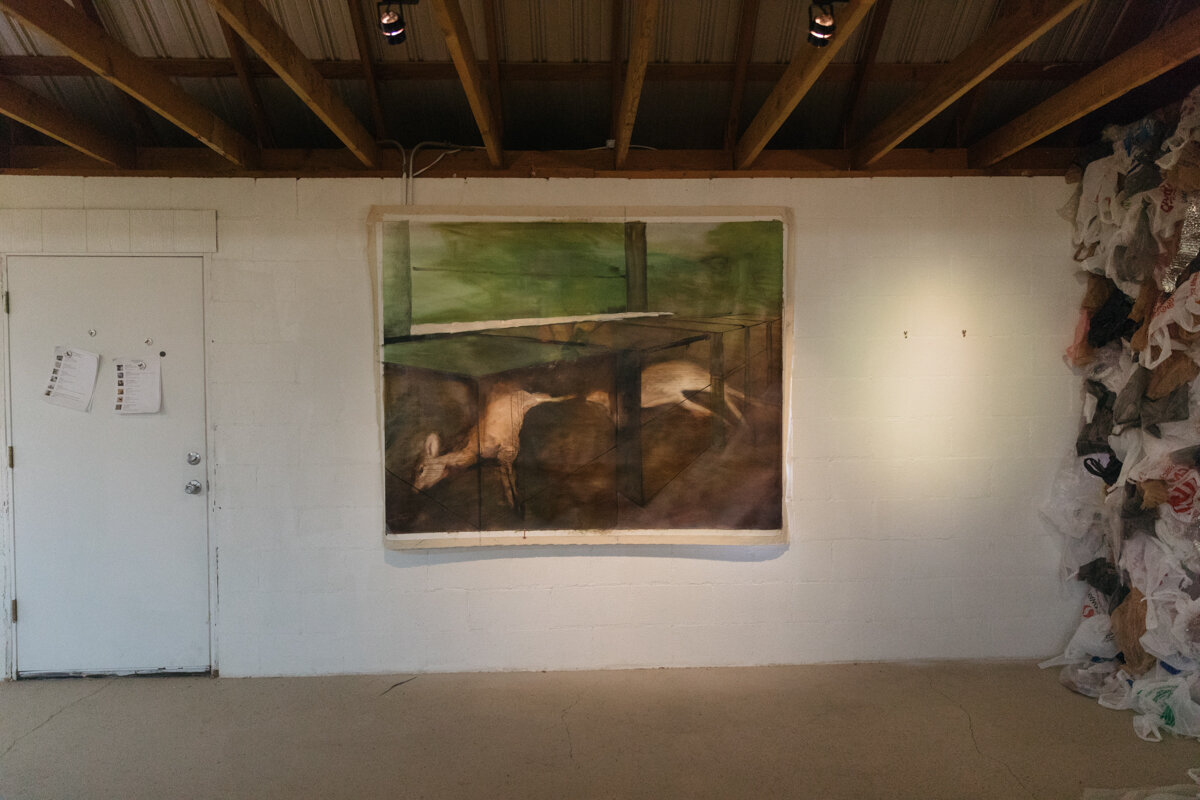
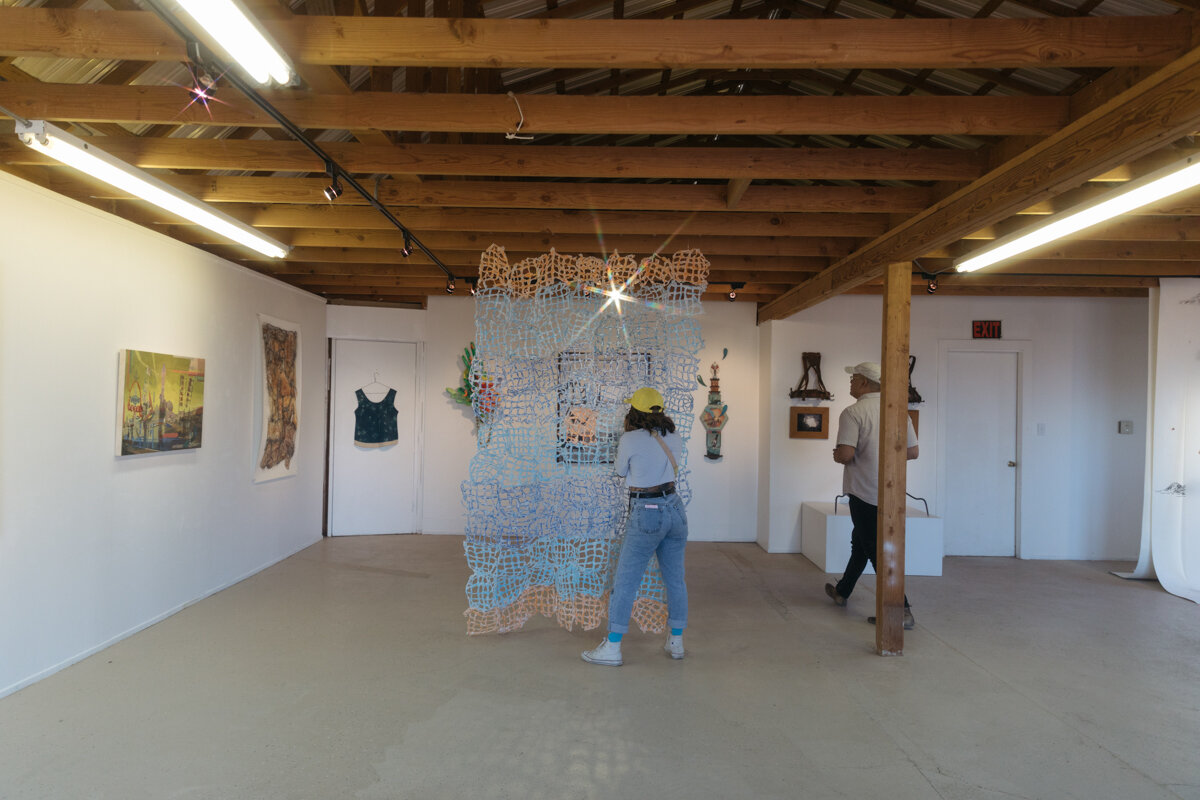

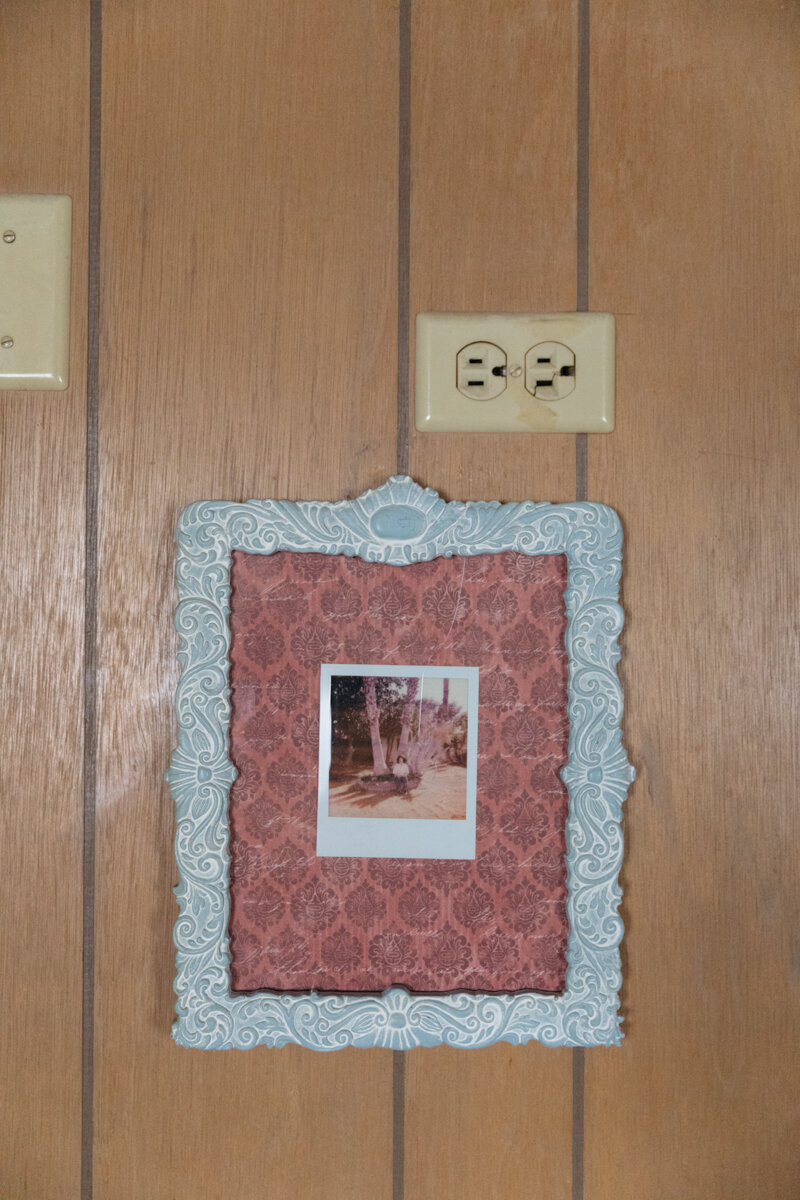
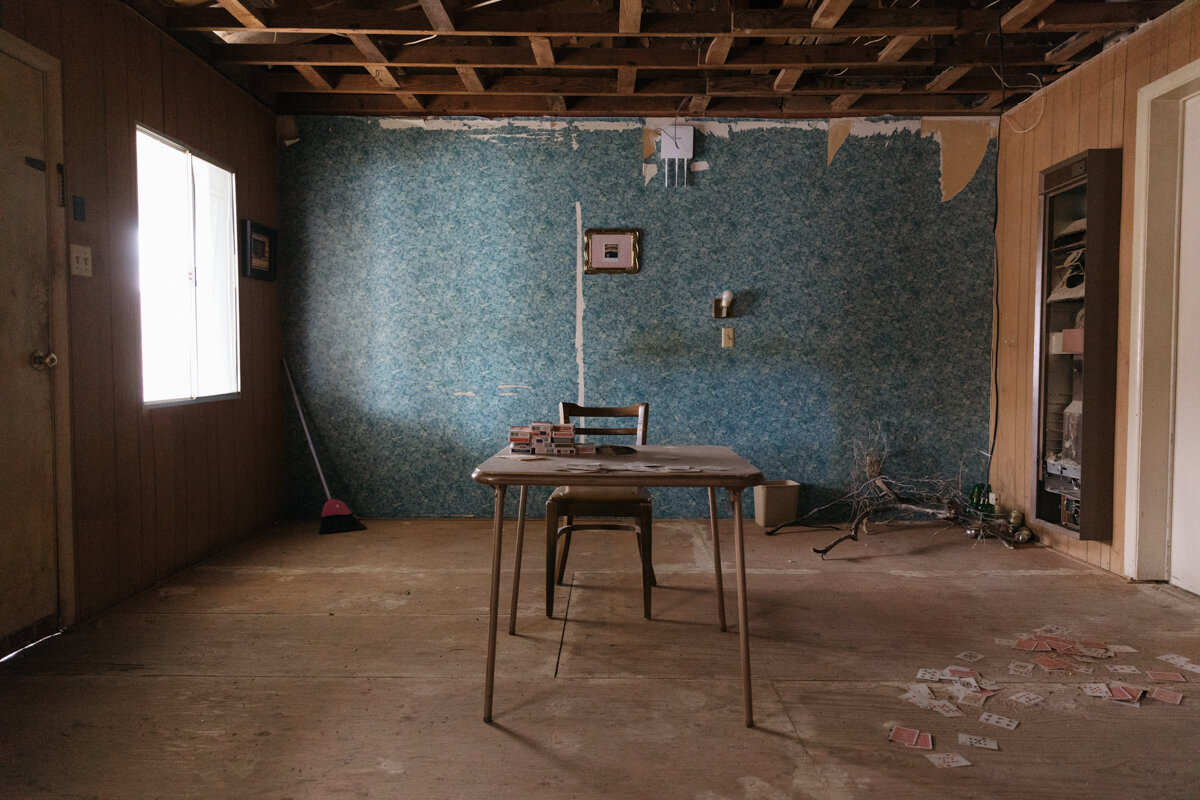
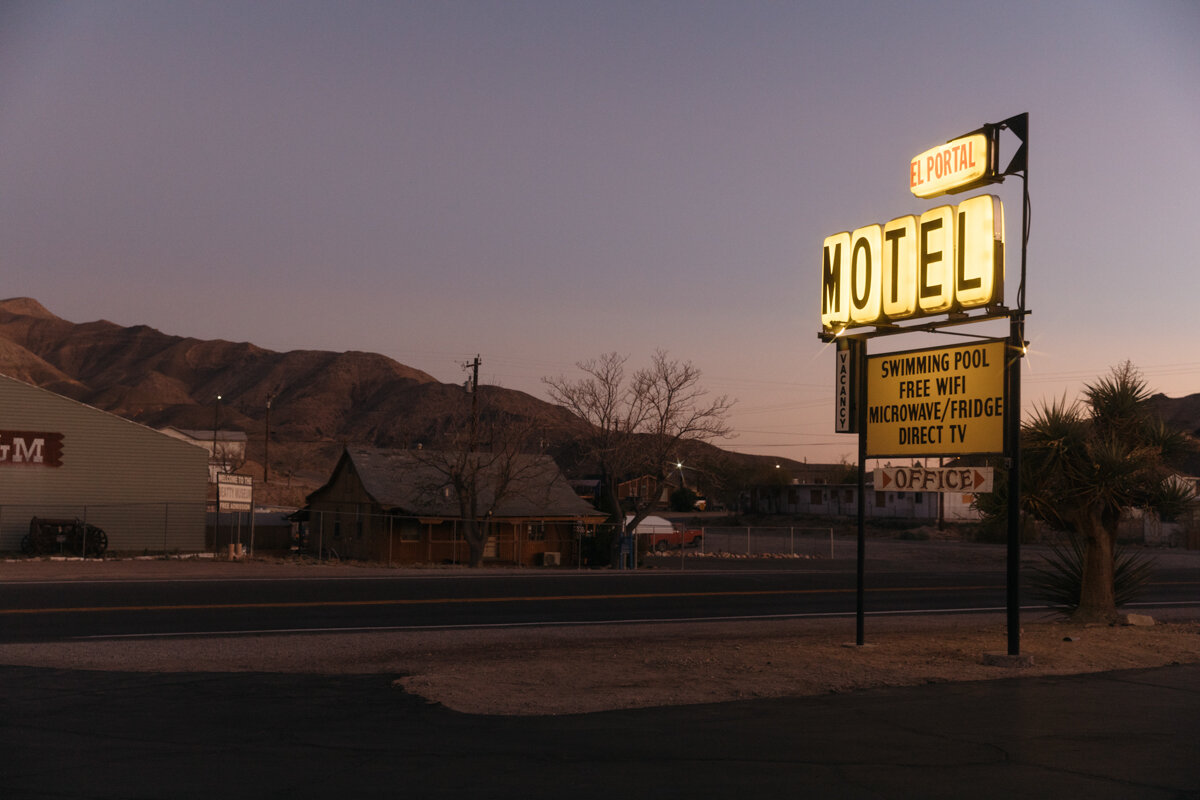
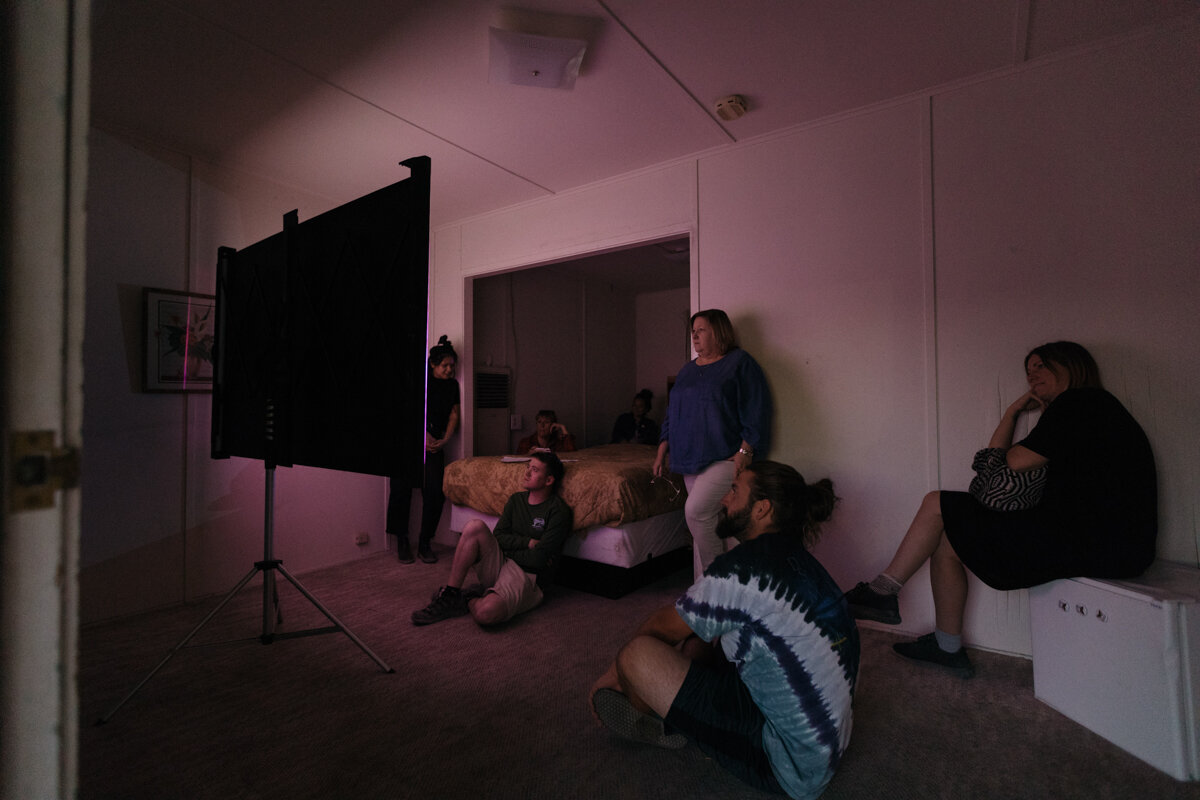

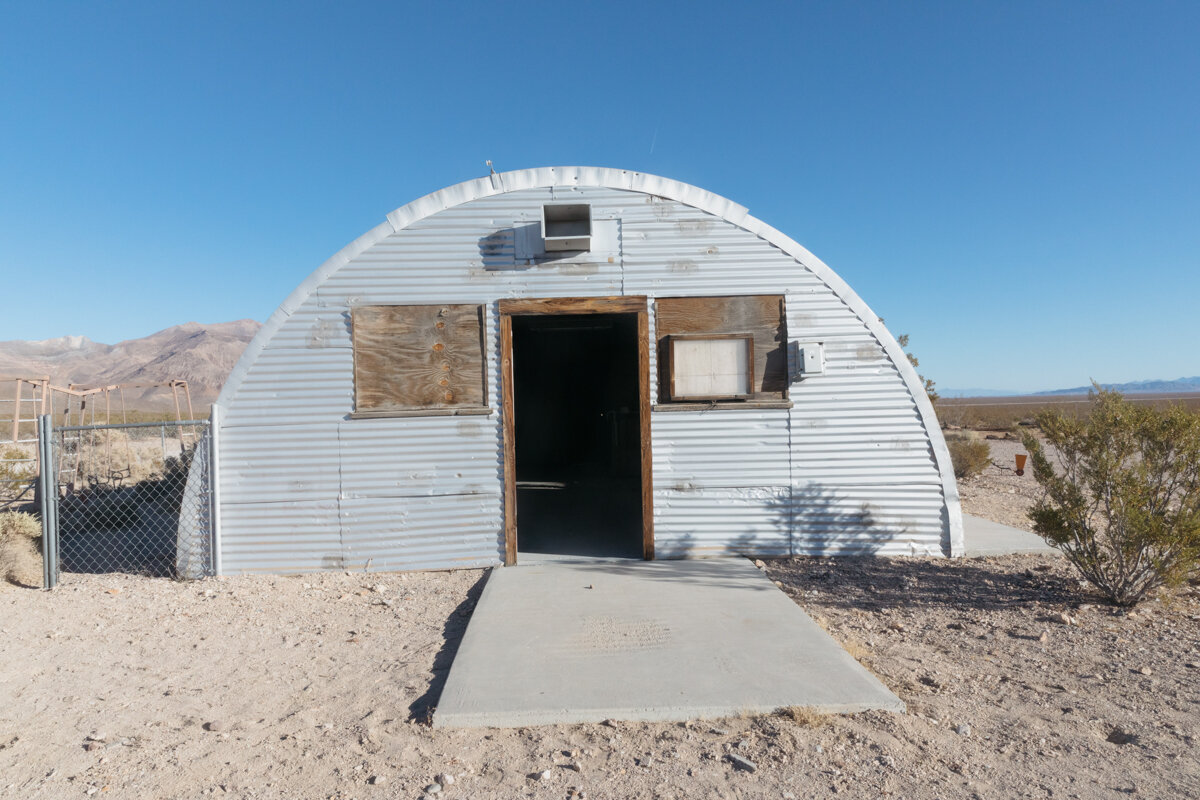
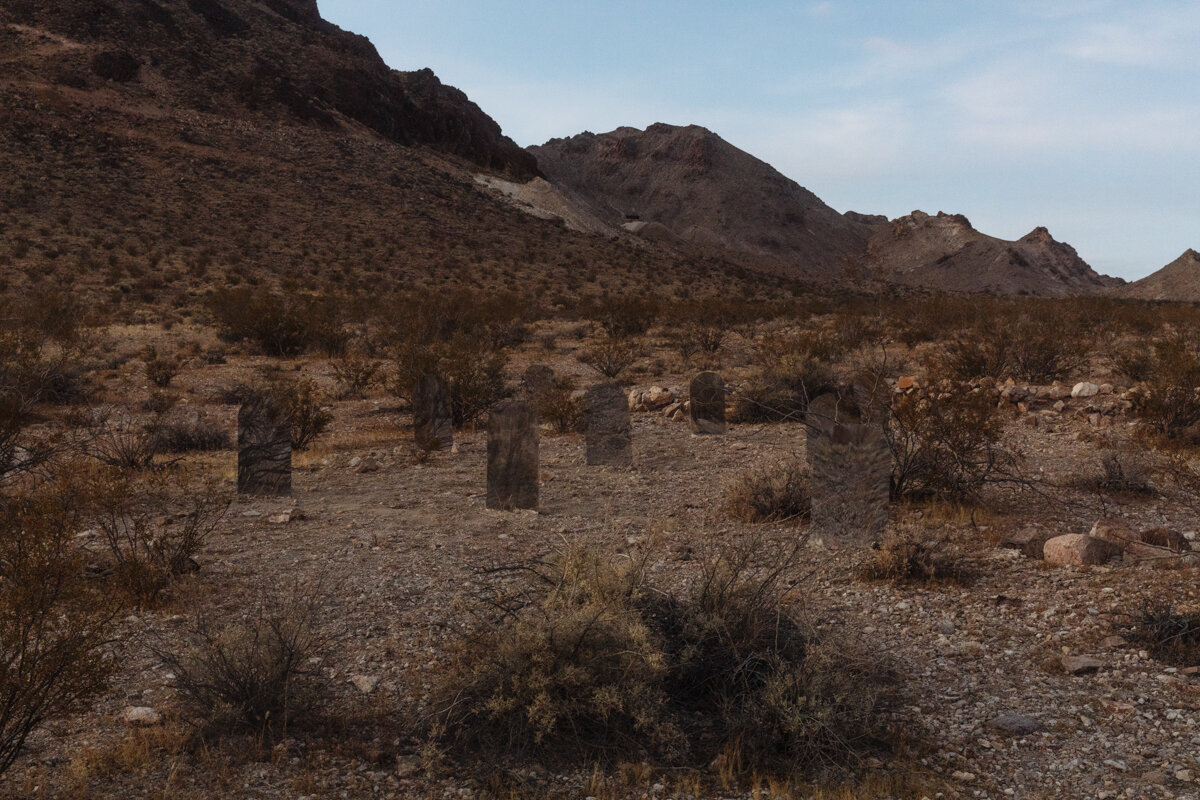

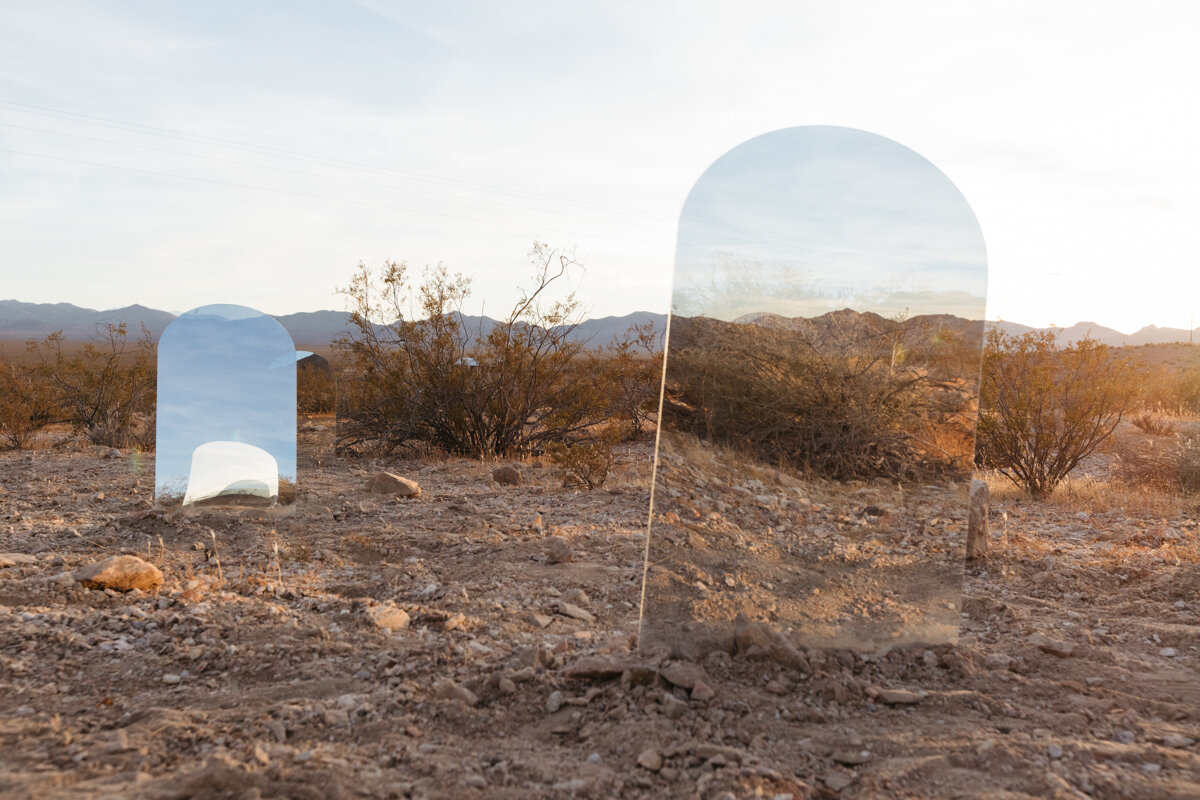
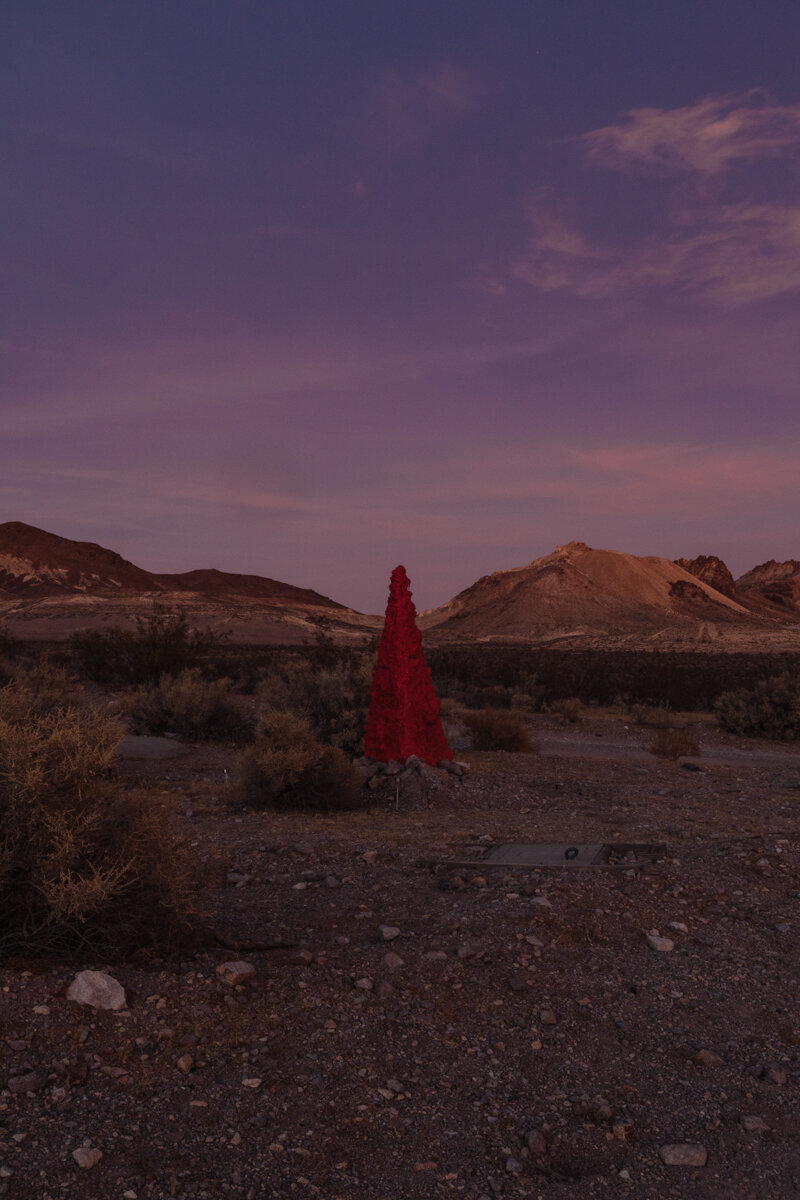
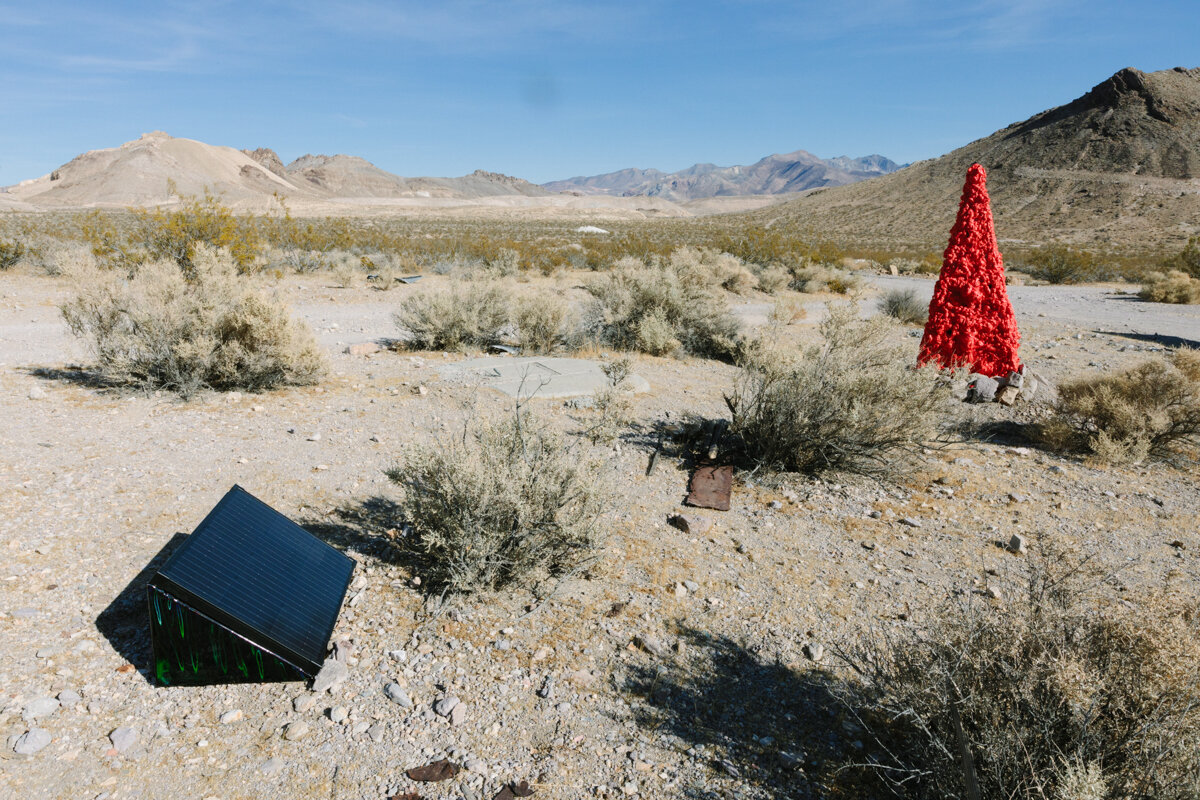
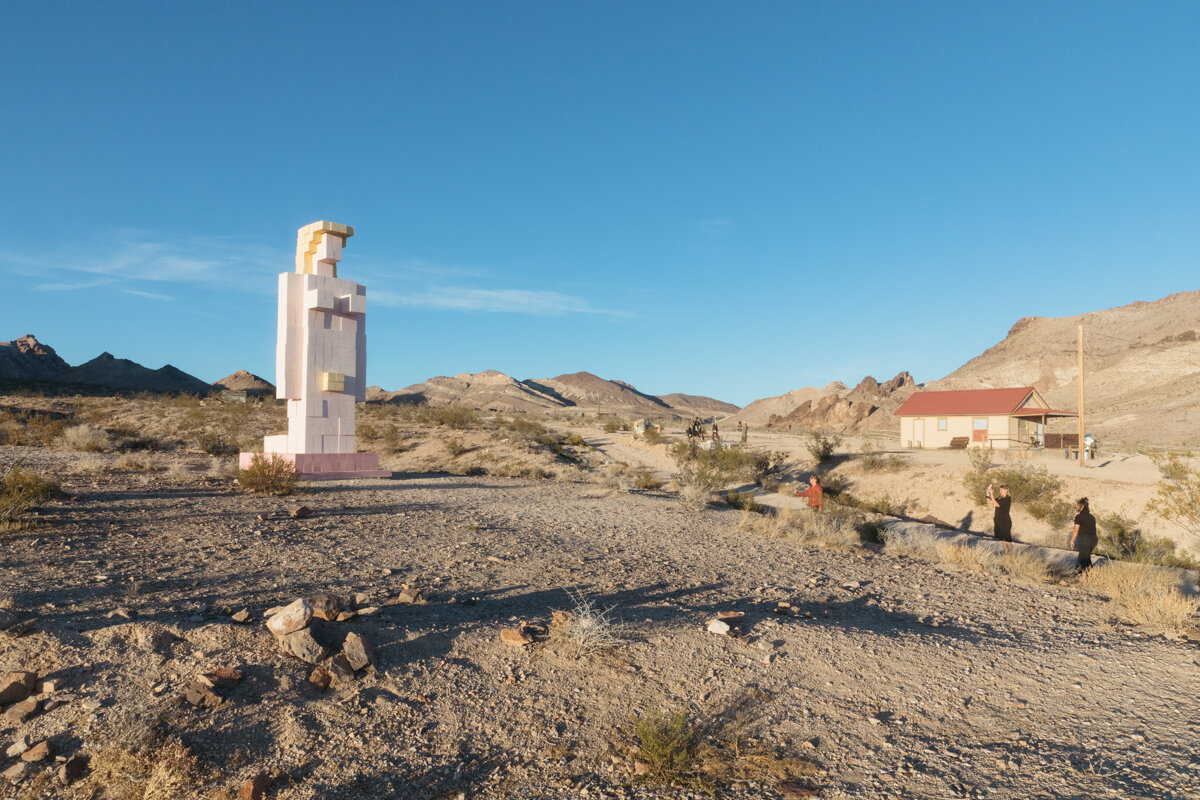
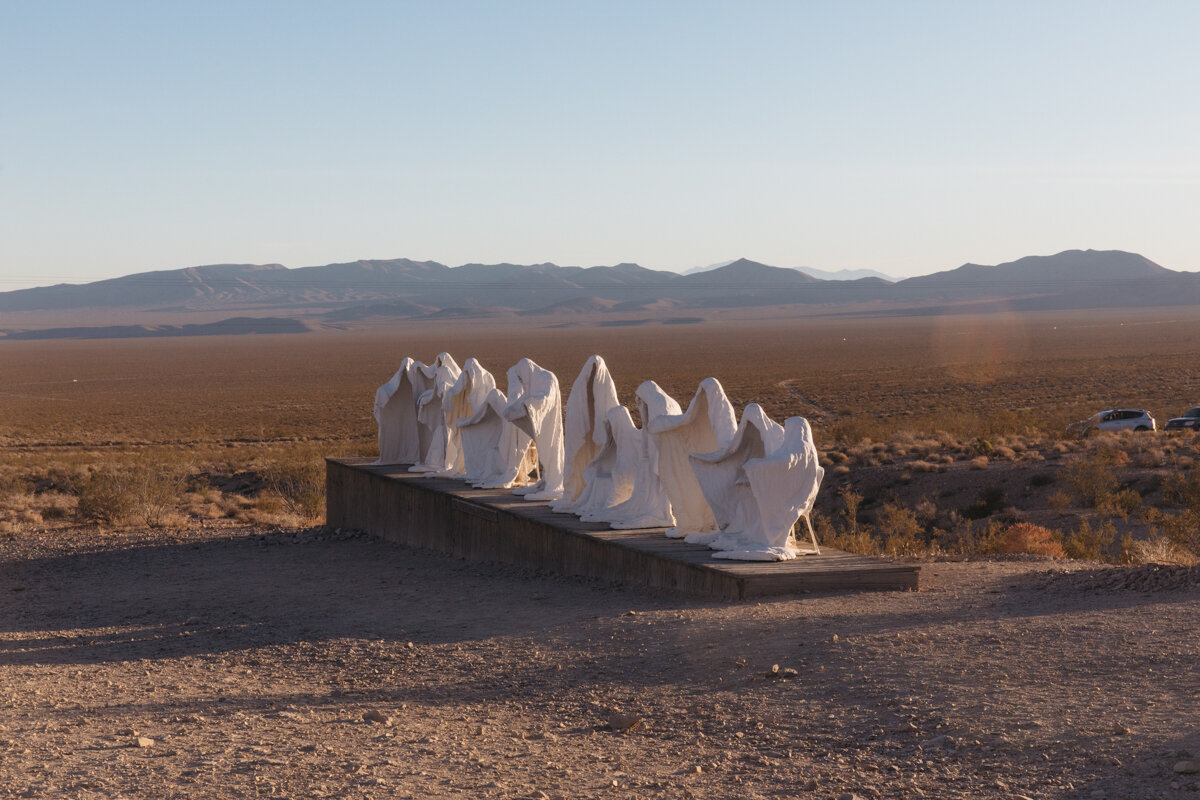
Posted by Wendy Kveck, November 23, 2019.









